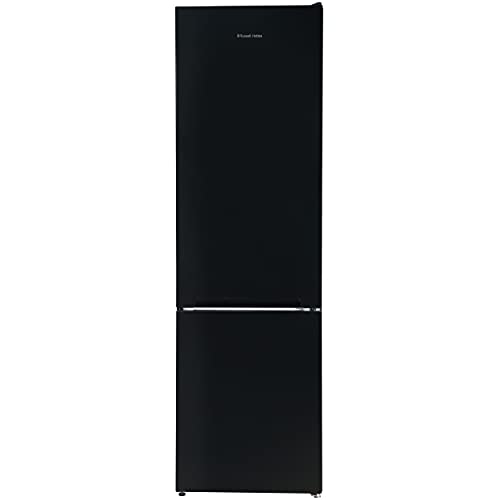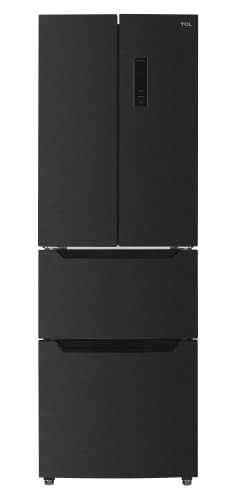best-french-style-fridge-freezer-uk9825
best-french-style-fridge-freezer-uk9825
How Fridges And Freezers Impacted My Life The Better
Understanding Fridges and Freezers: The Essential Kitchen Appliances
Refrigerators and freezers are two of the most vital devices in modern-day kitchen areas. These appliances serve an essential role in food conservation and waste decrease by ensuring that disposable items stay fresh and safe for consumption. This article digs into the numerous kinds of fridges and freezers, their performances, and essential considerations for choice and maintenance.
Kinds of Refrigerators
The marketplace offers a variety of refrigerator types, each created to fulfill different consumer needs. Below is a list of the most common kinds of fridges:
-
Top-Freezer Refrigerators
- Most typical type.
- Freezer compartment lies above the refrigerator section.
- Typically more budget friendly and energy-efficient.
-
Bottom-Freezer Refrigerators
- Freezer is situated at the bottom.
- Allows easier access to fresh products at eye level.
- Often includes pull-out drawers for much better company.
-
Side-by-Side Refrigerators
- Refrigerator and freezer sections are adjacent.
- Perfect for narrow kitchen areas and allows simple access to both compartments.
- Often includes water and ice dispensers.
-
French Door Refrigerators
- Combines a bottom freezer with double doors at the top.
- Deals sufficient storage and trendy designs.
- Frequently includes features like temperature-controlled drawers.
-
Compact Refrigerators
- Smaller sized size ideal for restricted areas.
- Typically used in dormitory spaces, studio apartments, or as secondary fridges.
Table 1: Comparison of Refrigerator Types
| Type | Benefits | Disadvantages | Common Size |
|---|---|---|---|
| Top-Freezer | Budget friendly, energy-efficient | Less hassle-free access to the freezer | 14-30 cu. ft. |
| Bottom-Freezer | Simpler access to fresh food | Freezer can be more difficult to arrange | 19-30 cu. ft. |
| Side-by-Side | Easy gain access to, water/ice dispenser | Narrow vs. storage area | 22-30 cu. ft. |
| French Door | Elegant, spacious, organized | More costly | 20-30+ cu. ft. |
| Compact | Space-saving, portable | Minimal storage | 1.7-5.5 cu. ft. |
Types of Freezers
Freezers are an equally important device for food preservation. They come in different designs designed to fit various family requirements. Think about the following types:
-
Upright Freezers
- Run like a basic refrigerator with vertical storage.
- Simpler to organize with racks and compartments.
-
Chest Freezers

- Large Fridge Freezers Uk, horizontal design typically providing more storage area.
- Maintains temperatures much better during power failures.
- More energy-efficient than upright models.
-
Portable Freezers
- Compact units perfect for outdoor activities or small spaces.
- Often used for camping trips or as temporary storage.
Table 2: Comparison of Freezer Types
| Type | Advantages | Disadvantages | Normal Size |
|---|---|---|---|
| Upright Freezer | Much easier to arrange | Less energy-efficient, more floor area | 5-20 cu. ft. |
| Chest Freezer | Holds more items, energy-efficient | Harder to organize | 5-25 cu. ft. |
| Portable Freezer | Compact and versatile | Limited storage capacity | 1-10 cu. ft. |
Key Features to Consider
When selecting a fridge or freezer, consumers must bear in mind numerous features that can improve performance:
- Energy Efficiency: Look for models with the ENERGY STAR accreditation to minimize electrical power bills.
- Storage Capacity: Evaluate storage requirements based upon household size and eating routines.
- Temperature level Control: Some appliances provide digital controls for accurate temperature settings.
- Adjustable Shelving: Customizable shelving enables for optimum company.
- Water and Ice Dispenser: Offers benefit however can take up important area inside.
- Sound Level: Sound scores can influence comfort, specifically in open-concept homes.
Benefits and drawbacks of Having a Fridge and Freezer
While fridges and freezers are indispensable innovations, they likewise have specific advantages and disadvantages:

| Pros | Cons |
|---|---|
| Maintain food life-span and minimize waste | Need routine maintenance |
| Allow bulk buying and meal prepping | Can be pricey to buy and run |
| Deal convenience and quick access to food | Occupy considerable cooking area space |
Upkeep Tips
To guarantee longevity and optimal performance of fridges and freezers, think about the following maintenance pointers:
- Regular Cleaning: Clean the interior and outside regularly to avoid accumulation of dirt and bacteria.
- Examine Seals: Inspect door seals regularly for leakages to maintain efficiency.
- Temperature Settings: Keep the fridge at 34-38 ° F and the freezer at 0 ° F for optimal food preservation.
- Thaw as Needed: Chest freezers must be thawed regularly to keep performance.
- Clear Air Vents: Ensure that air flow isn’t obstructed to enhance energy performance.
Frequently asked questions About Fridges and Freezers
Q1: How long can food be kept in a freezer?A: Most foods can be kept in a freezer for a number of months. Meats and poultry frequently last 4-12 months, while vegetables can last approximately 8-12 months.
Q2: How frequently ought to I clean my fridge and freezer?A: It is advisable to clean your fridge and freezer every 3 to 6 months, or as needed when spills happen. Q3: Can I put hot food straight in the fridge?A: It is recommended to cool hot food to room temperature before positioning it in the fridge to prevent
raising the temperature level inside the home appliance. Q4: Why is my fridge running constantly?A: This might be due to a malfunctioning thermostat, blocked coils, or door seals that aren’t working appropriately. Fridges and freezers are invaluable
possessions to contemporary homes, providing necessary services for food storage and conservation.
Understanding the various types, functions, and maintenance requirements can help consumers select the best appliances for their requirements and maximize their functionality. Accepting energy-efficient designs not just supports sustainable practices however also contributes to considerable savings on energy bills, making notified options more important than ever.


